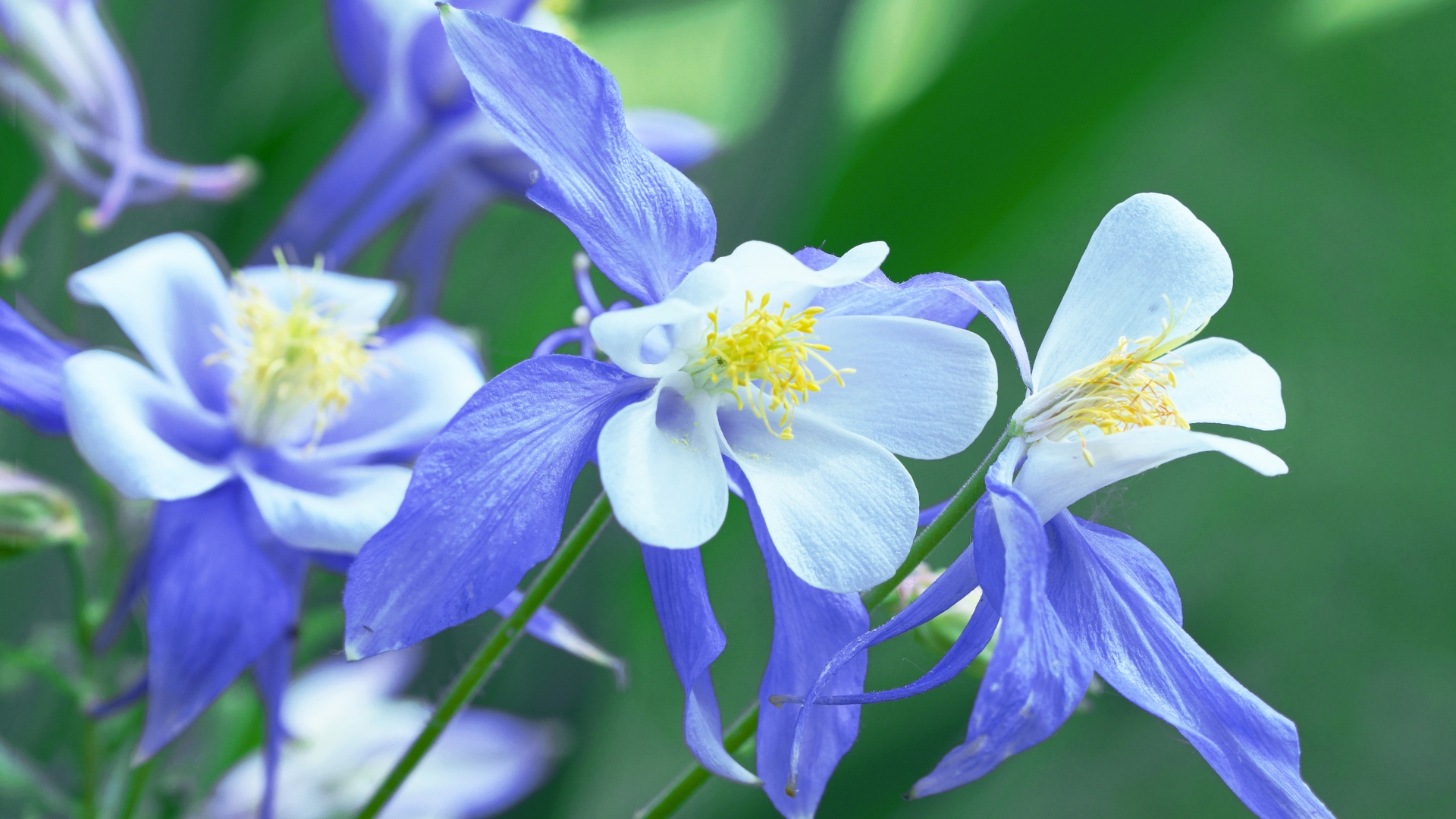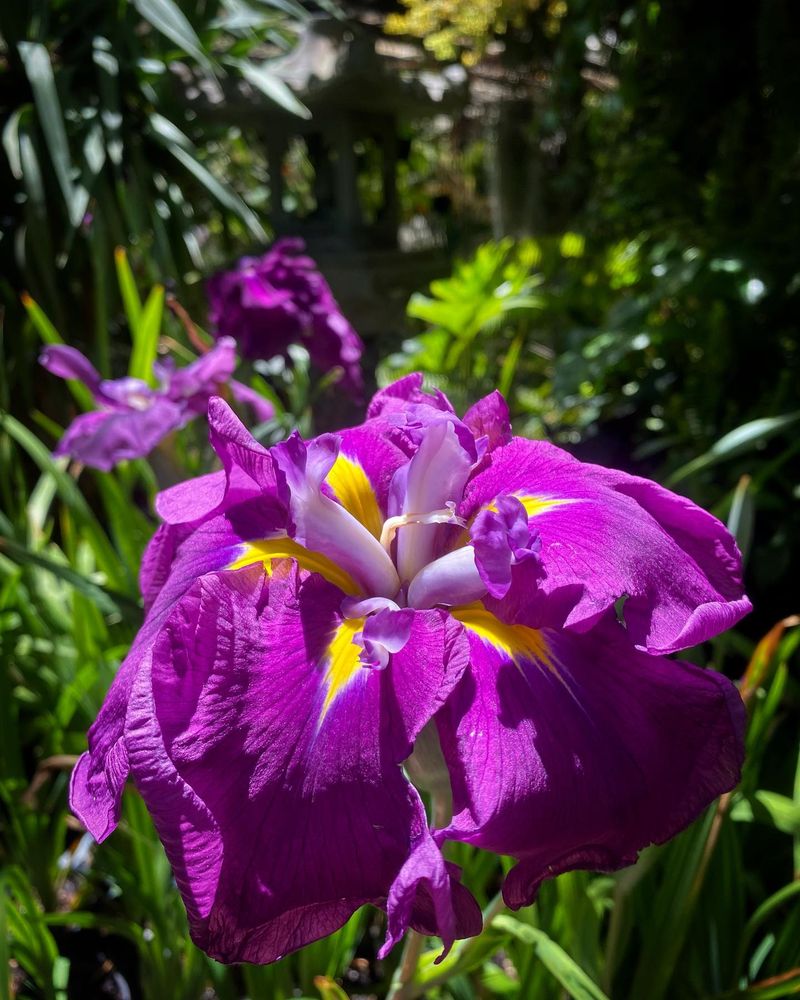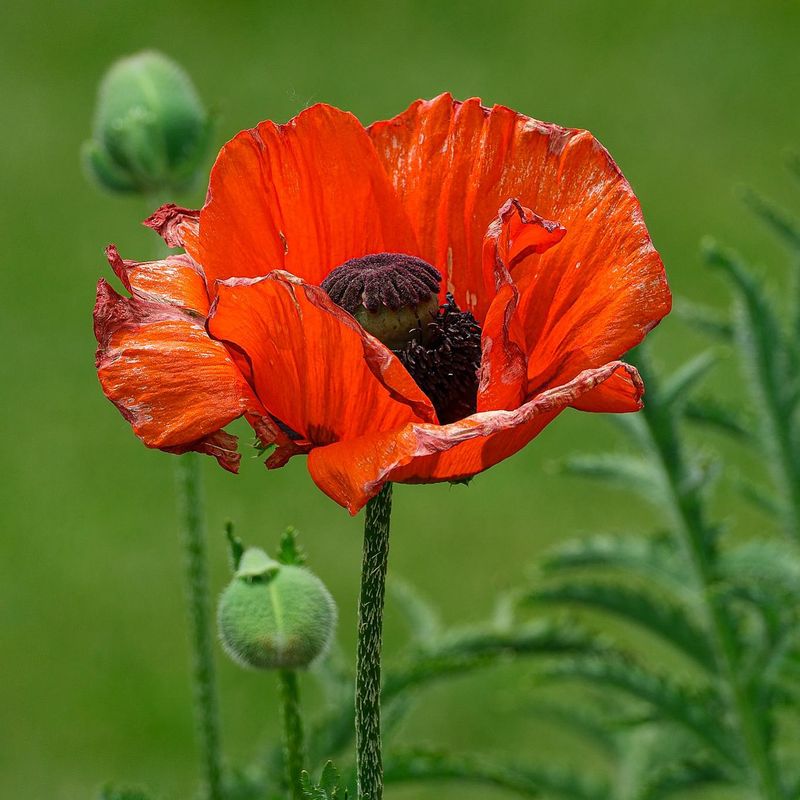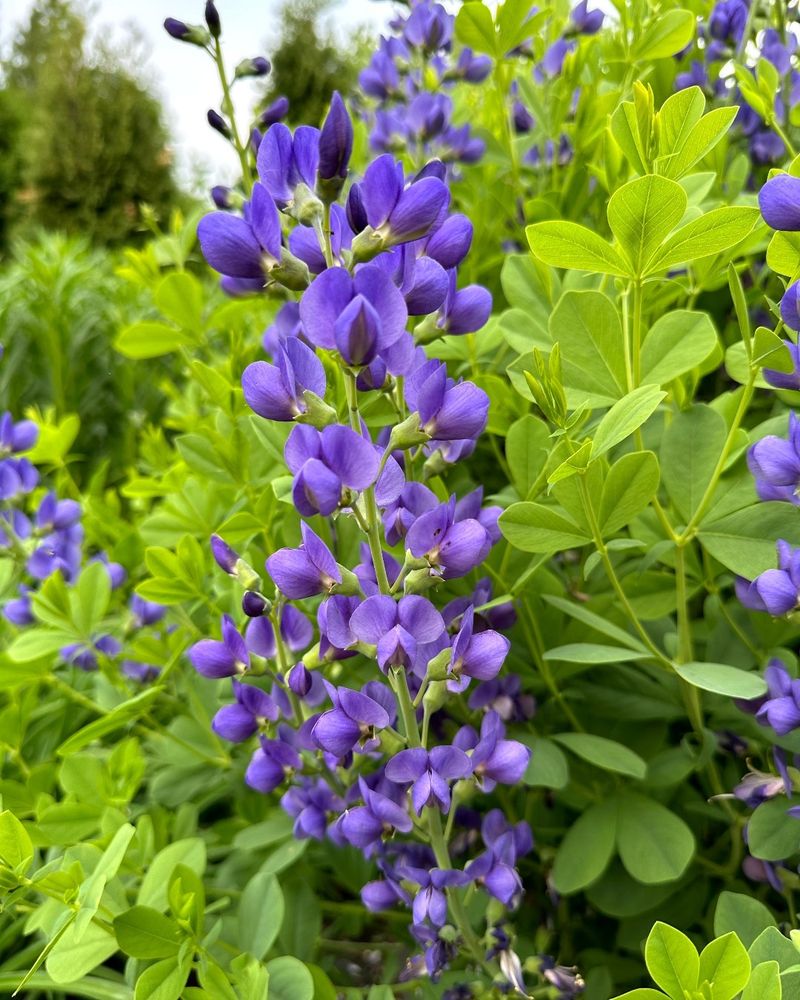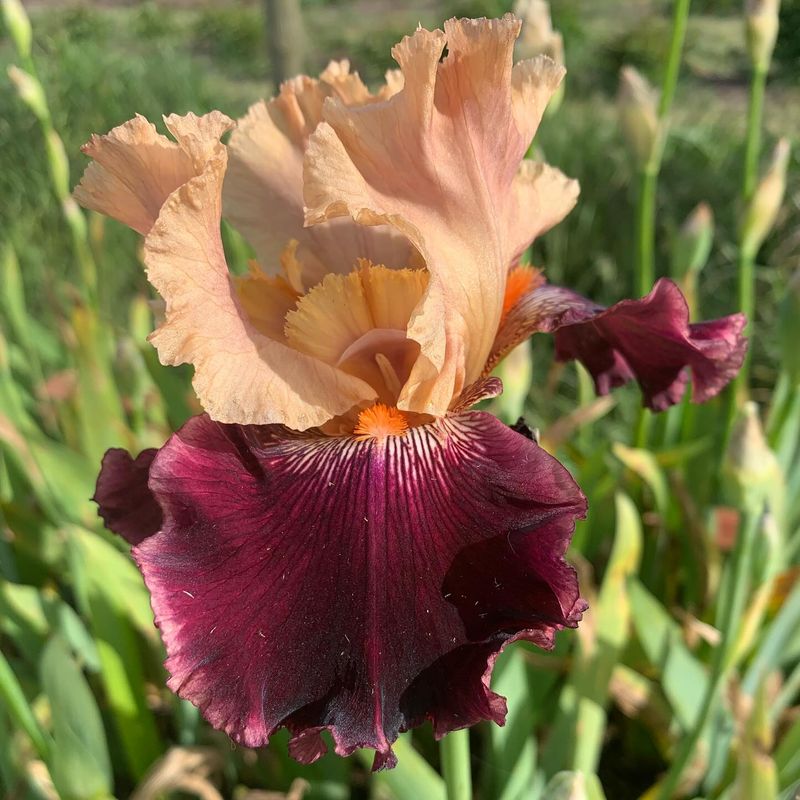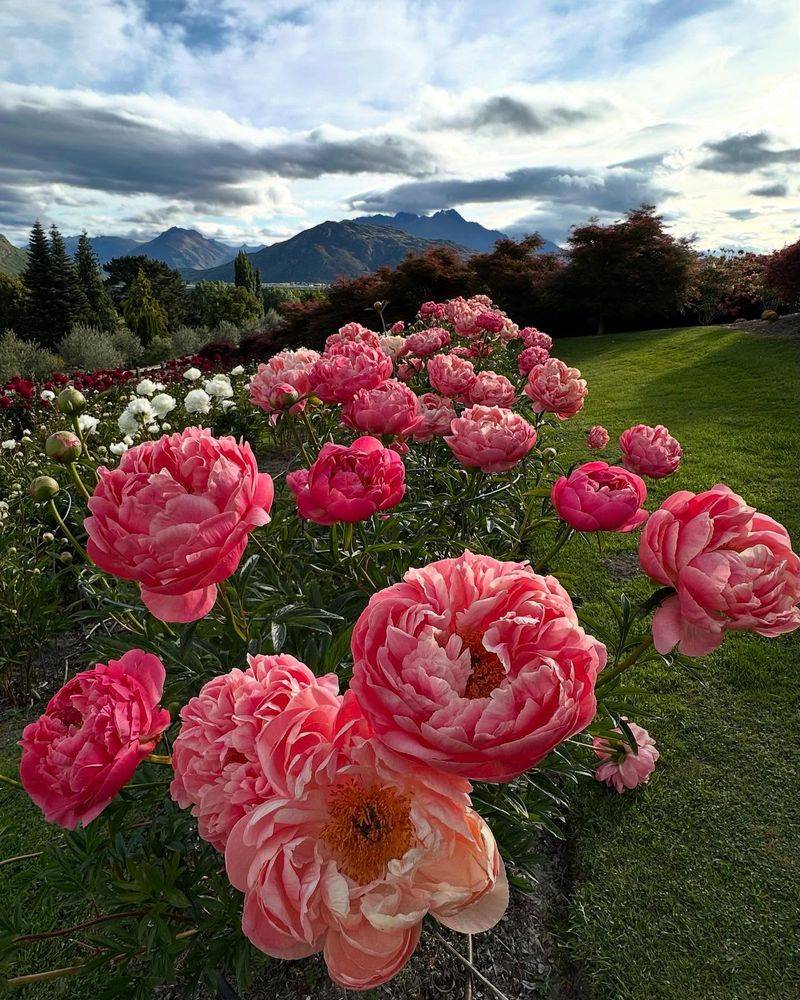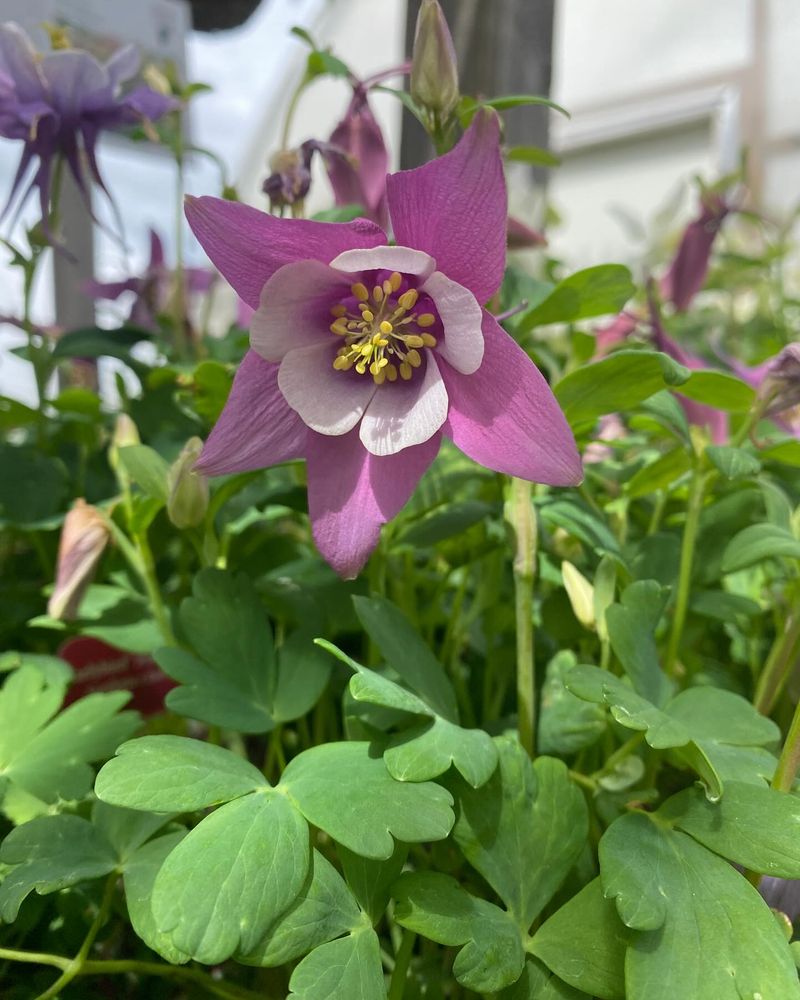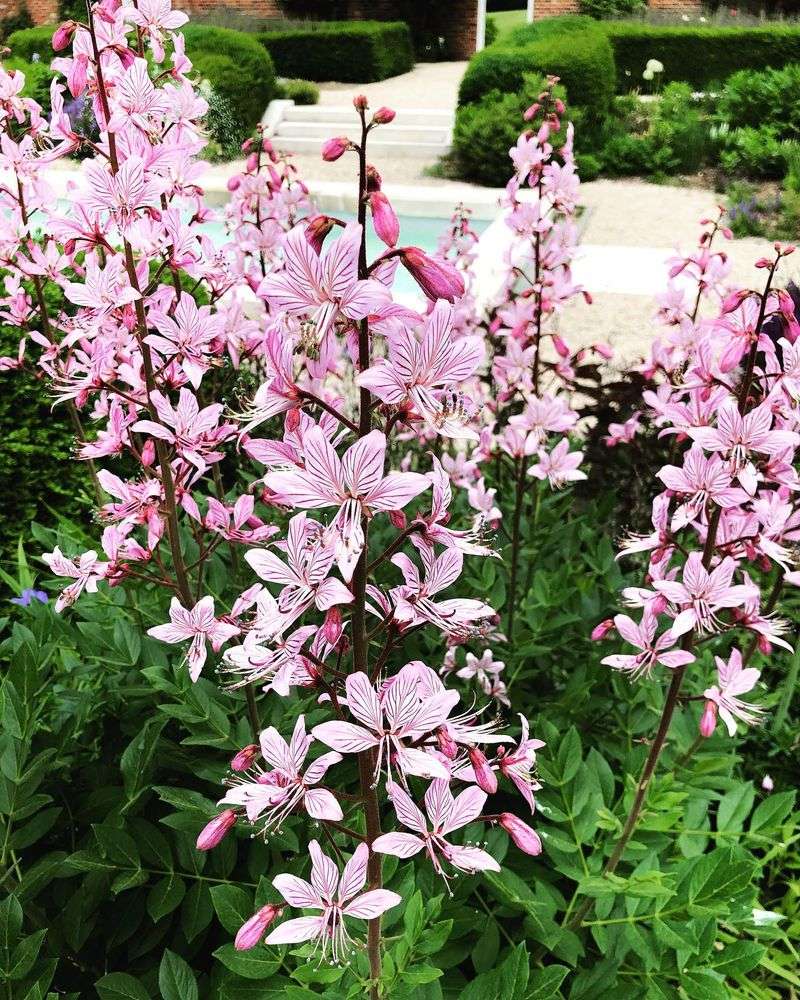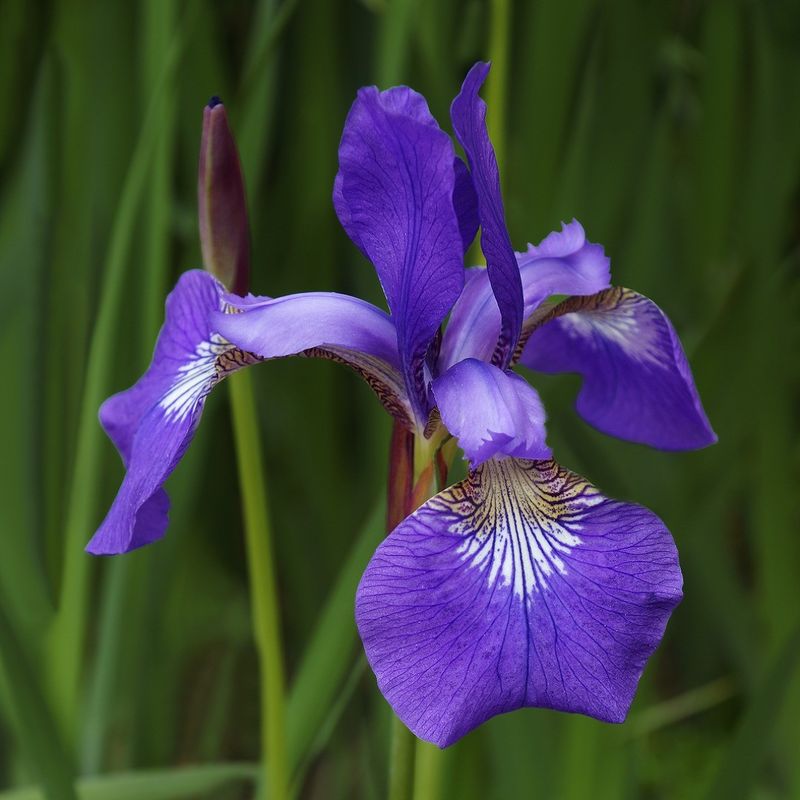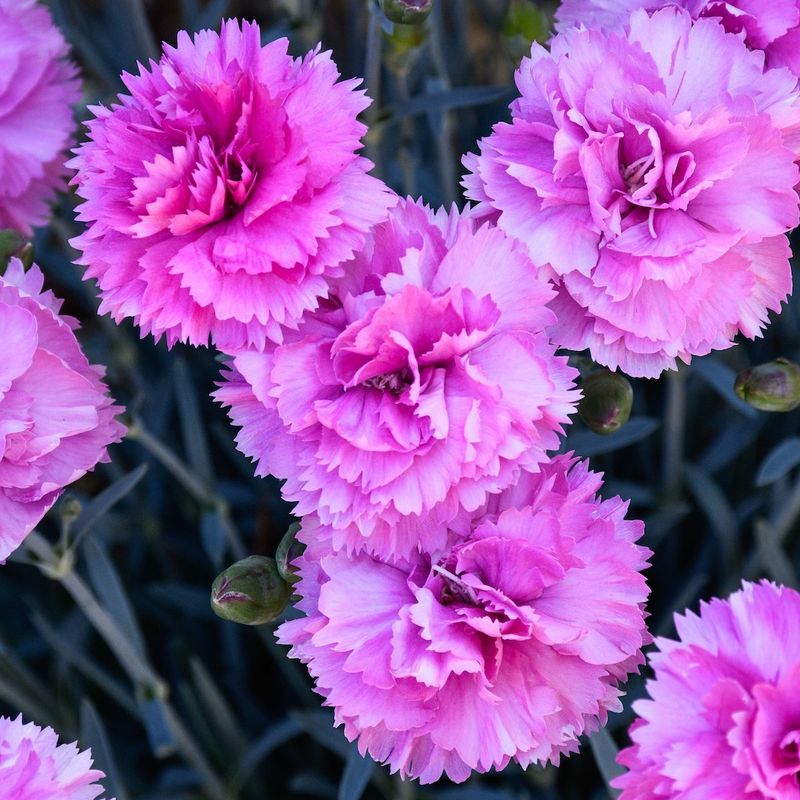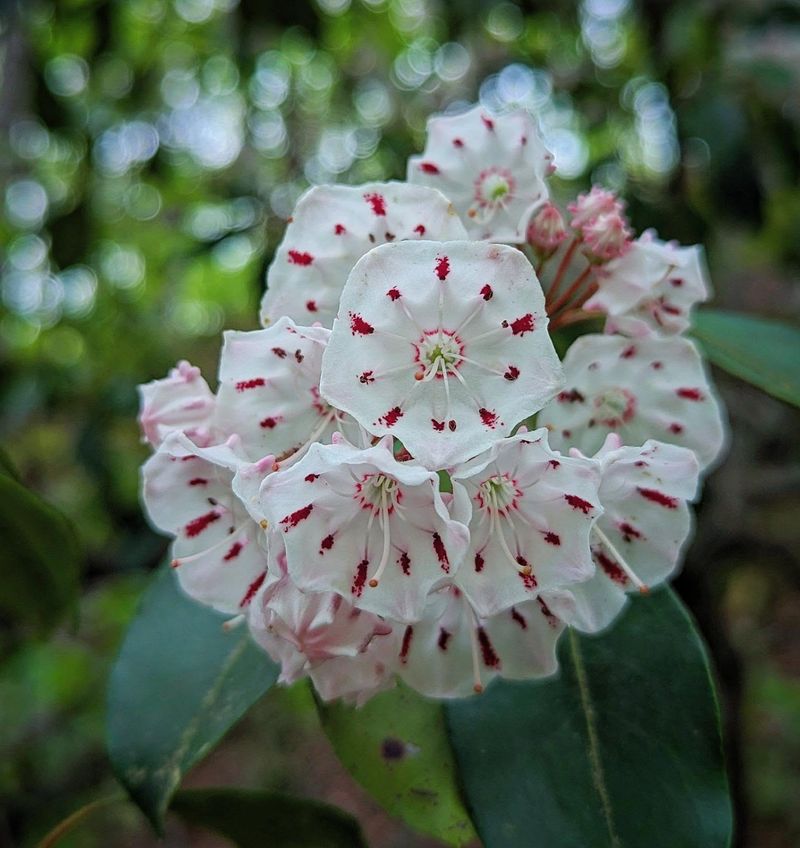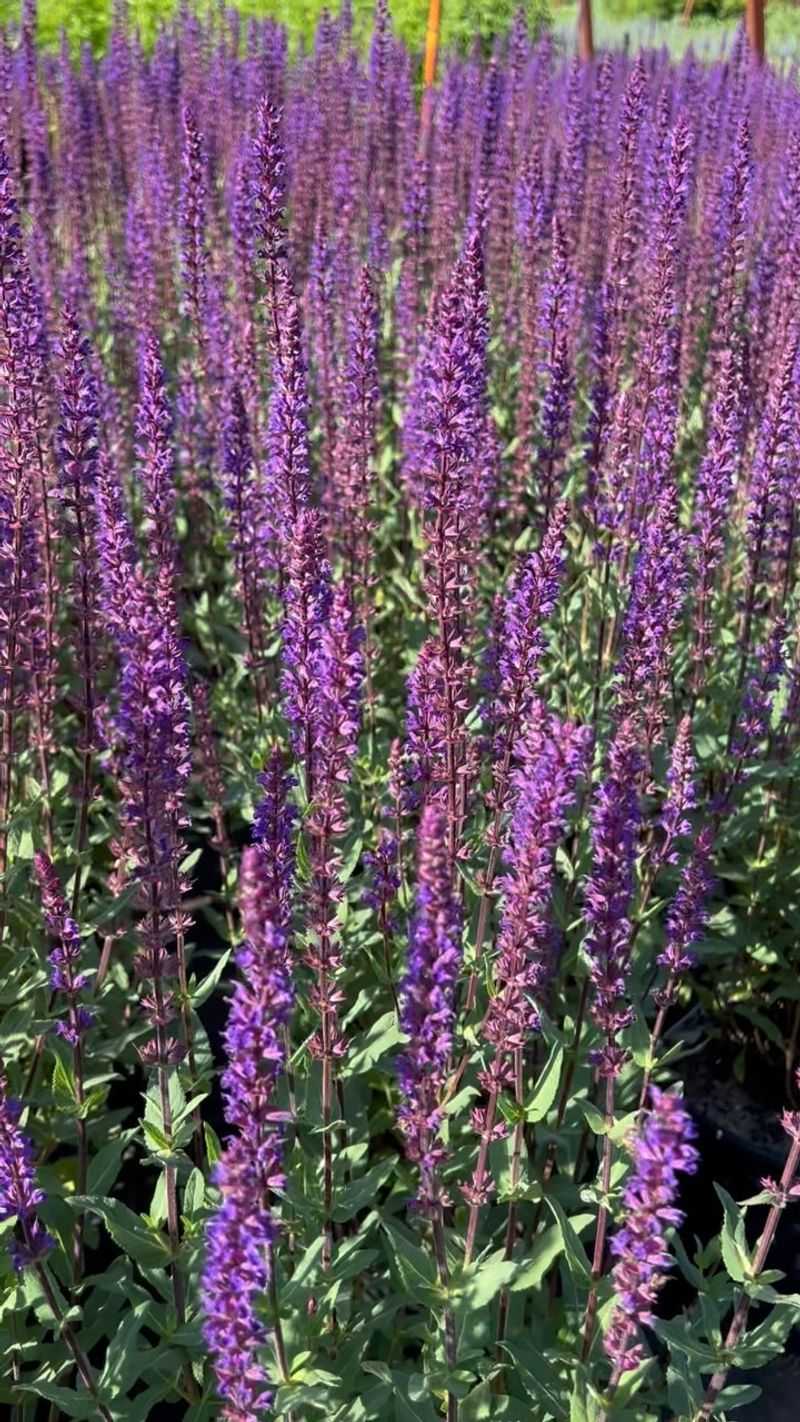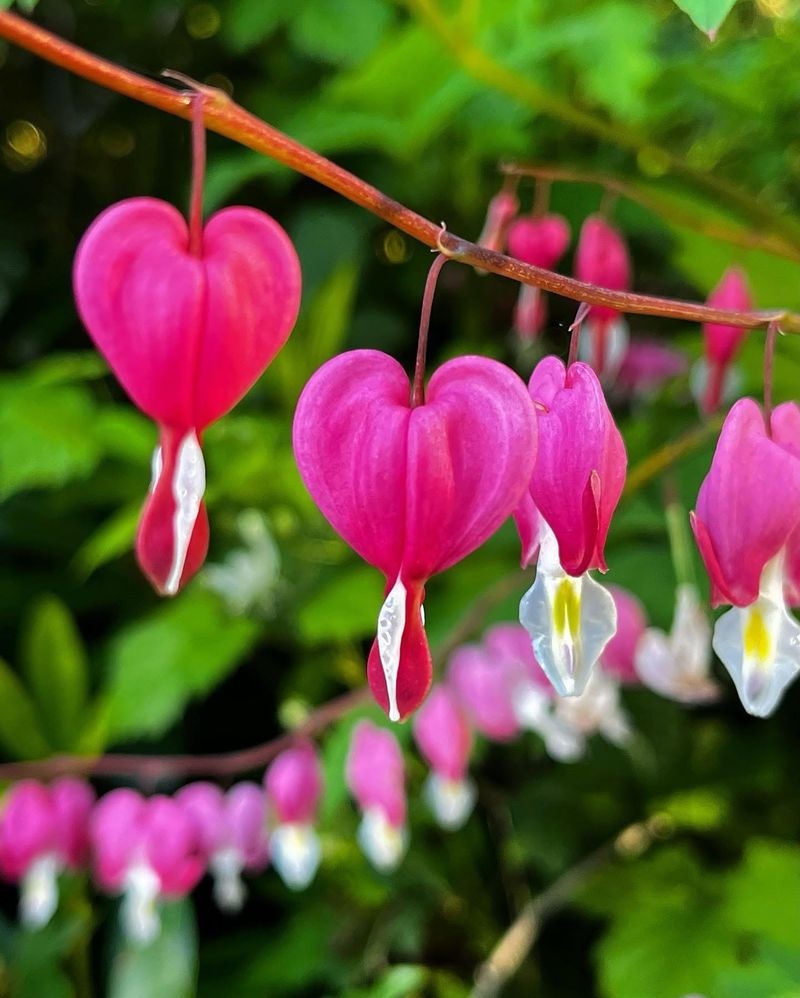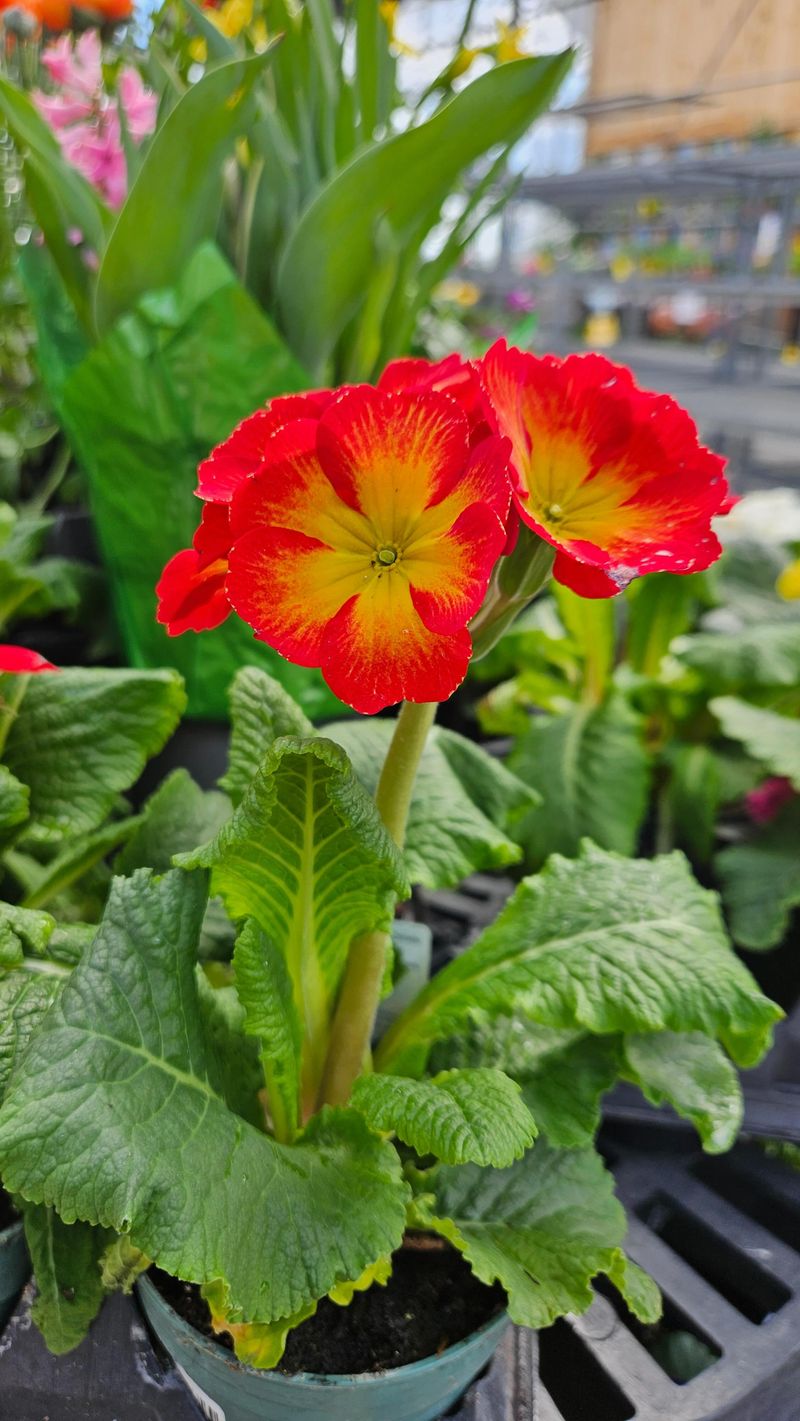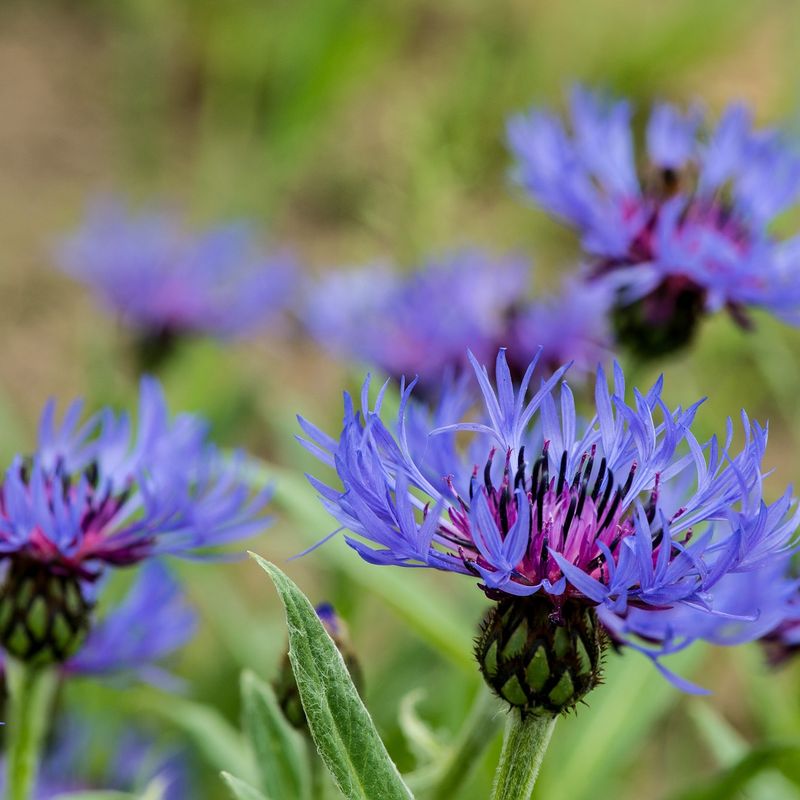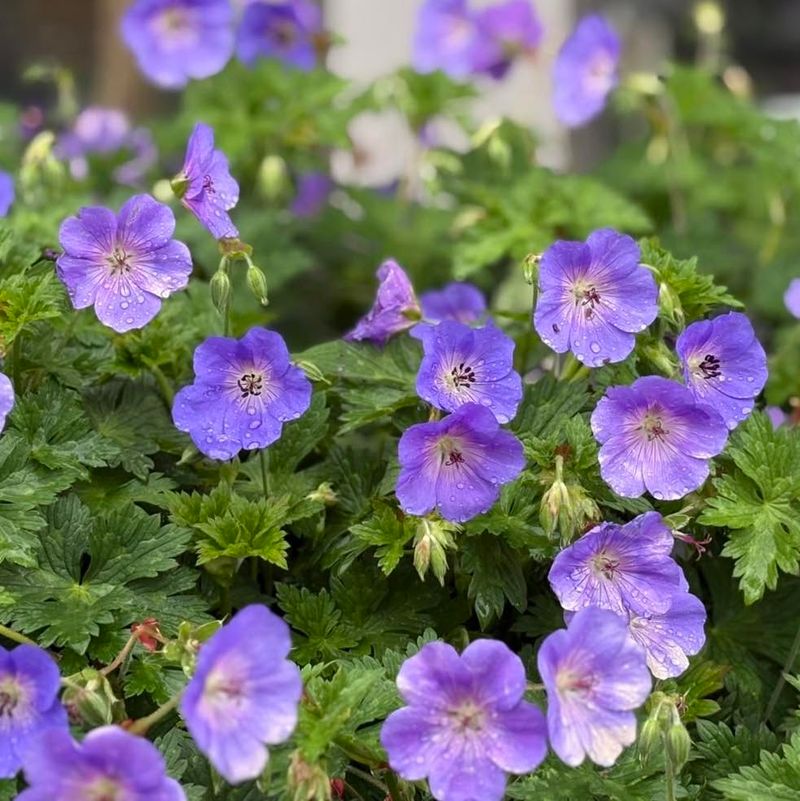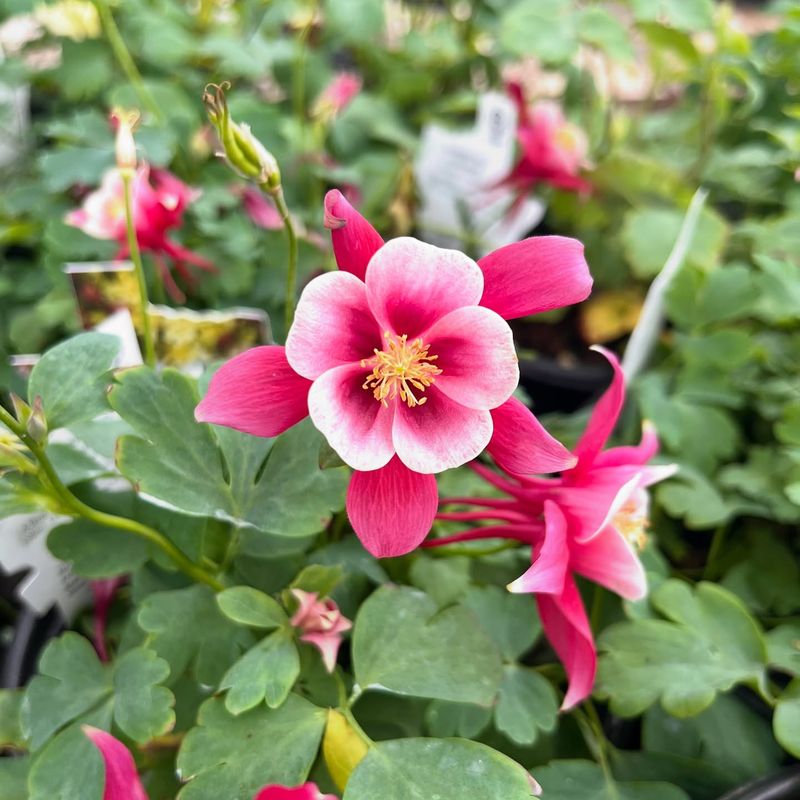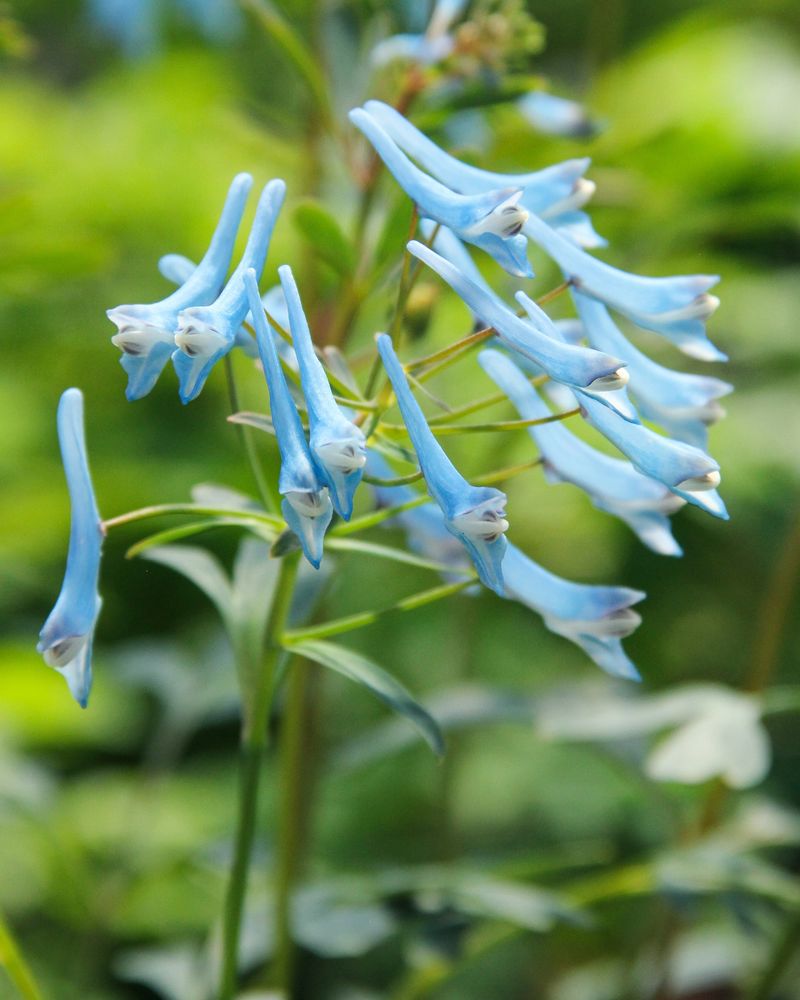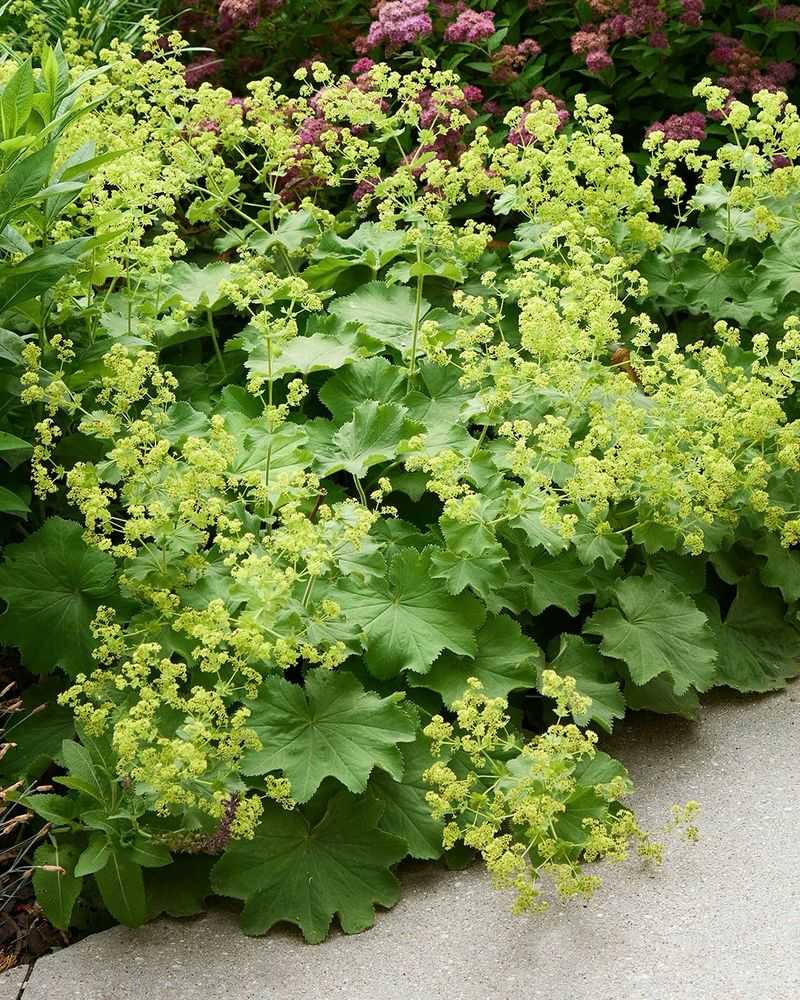Some spring perennials like to take their time—but when they finally bloom, wow, they’re totally worth the wait. I’ve grown a bunch that skipped the early rush and still managed to steal the spotlight.
These 17 beauties may not be the first to show up, but they sure know how to make an entrance. A few of them surprised me with how long they lasted and how many compliments they got.
If you’ve been overlooking the late bloomers, this list might just change your planting plans.
1. Japanese Iris
Arriving fashionably late to the spring garden party, Japanese iris delivers elegant blooms with extraordinary detail. The intricate petals unfold like delicate butterfly wings in shades of purple, blue, and white, often with striking veining patterns.
Unlike their bearded cousins, these beauties thrive in consistently moist soil and even shallow standing water. Their vertical form makes them perfect for pond edges or rain gardens.
2. Oriental Poppy
Few flowers match the pure drama of oriental poppies when they finally burst open. Massive tissue-paper blooms in fiery orange, scarlet, or salmon create a show-stopping display that’s simply unforgettable.
The slightly crinkled petals surround a dark center that bees find irresistible. After flowering, these perennials go dormant, so plant them among later-developing companions that will fill in the space.
3. Baptisia (False Indigo)
Resembling small lupines but with much greater staying power, baptisia creates gorgeous spires of pea-like blooms in blue, purple, yellow or white. The flowers give way to interesting seed pods that add visual interest well into winter.
Extremely drought-tolerant once established, these native plants develop deep taproots that make them nearly indestructible. Their blue-green foliage forms attractive mounds that look great even when not in bloom.
4. Bearded Iris
Royalty of the late spring garden, bearded irises unfurl their ruffled blooms with almost architectural precision. The distinctive “beard” – a fuzzy patch on the falls – adds both visual interest and guides pollinators to the nectar.
Available in virtually every color except true red, these hardy perennials prefer sunny spots with excellent drainage. Many varieties offer intoxicating fragrance that perfumes the entire garden when warm afternoon sun hits the blooms.
5. Peonies
Legendary for their sumptuous blooms and intoxicating fragrance, peonies are the grand finale of spring perennials. Their massive flowers range from simple elegance to extravagant double forms packed with hundreds of petals.
Often passed down through generations, these long-lived plants can thrive for decades with minimal care. The glossy, deeply cut foliage remains attractive throughout summer, providing structure long after the blooms have faded.
6. Late Tulips
Unlike their early-blooming relatives, late tulips wait patiently until other spring bulbs have faded before making their grand entrance. The elegant, goblet-shaped blooms come in vibrant colors with remarkable staying power.
Darwin hybrids and lily-flowered varieties are particularly reliable performers, often returning for multiple years. Their strong stems resist flopping even during spring storms, making them excellent cut flowers for indoor arrangements.
7. Columbine
Dancing above delicate, fern-like foliage, columbine flowers look like tiny ballerinas with their distinctive spurred petals. These charming blooms appear in a rainbow of colors, often with contrasting centers or bicolor combinations.
Hummingbirds find their nectar-rich spurs irresistible. Self-seeding happily but never aggressively, columbines create natural drifts that look perfectly at home in woodland settings or cottage gardens.
8. Gas Plant (Dictamnus)
Named for the flammable oils its flowers produce on hot evenings, this conversation-starter perennial is worth the wait. Star-shaped blooms in white or soft pink rise above glossy, citrus-scented foliage on sturdy stems.
Incredibly long-lived, gas plants resent disturbance and prefer to be left undisturbed for decades. Once established, they’re drought-tolerant and virtually maintenance-free, blooming reliably each late spring.
9. Siberian Iris
More relaxed than their bearded cousins, Siberian irises bring graceful elegance to the late spring border. Their slender falls and upright standards create butterfly-like blooms in shades of blue, purple, yellow, and white.
Grassy, arching foliage remains attractive long after flowering ends. These easy-care perennials adapt to various soil conditions and actually prefer slightly acidic soil, making them perfect companions for rhododendrons and azaleas.
10. Dianthus (Pinks)
Bringing both color and fragrance to the late spring garden, dianthus produces masses of fringed flowers above neat mounds of blue-gray foliage. The spicy clove scent is especially noticeable on warm evenings.
Despite their delicate appearance, these tough little plants handle heat, drought, and poor soil with remarkable resilience. Many varieties rebloom throughout summer if promptly deadheaded, giving multiple seasons of cheerful color.
11. Mountain Laurel
Looking almost too perfect to be real, mountain laurel’s geometric flower clusters combine sophistication with whimsy. Each five-sided bloom features delicate pinwheel markings and tiny “spring-loaded” stamens that catapult pollen onto visiting insects.
This native woodland shrub performs beautifully in dappled shade and acidic soil. The glossy evergreen leaves provide year-round structure while the late spring flowers create a breathtaking display that’s worth waiting for.
12. Salvia ‘Caradonna’
Striking deep purple stems hold up brilliant violet-blue flower spikes on this standout perennial sage. The dramatic dark stems create stunning contrast against the flowers and surrounding plants.
Extremely attractive to bees and butterflies but ignored by deer, this water-wise plant thrives in hot, sunny spots. The aromatic foliage naturally repels many garden pests, making it a practical choice for organic gardens.
13. Bleeding Heart
Arching stems lined with perfect heart-shaped flowers make this woodland beauty instantly recognizable. The dangling pink or white “hearts” appear to drip from the branches, creating a romantic, nostalgic feel in shady garden corners.
After flowering, traditional varieties go dormant during summer heat. Newer cultivars like ‘Luxuriant’ offer longer-lasting foliage but still appreciate some afternoon shade and consistent moisture to look their best.
14. Primrose
Bringing cheerful color to late spring, primroses offer charming clusters of jewel-toned blooms above rosettes of crinkled leaves. Their rainbow palette includes nearly every color imaginable, from subtle pastels to vibrant primary hues.
Perfect for woodland edges and partially shaded spots, these compact perennials thrive where many others struggle. English primroses (Primula vulgaris) are especially long-lived and often form expanding clumps that can be divided to share.
15. Centaurea (Mountain Bluet)
Fringed, cornflower-blue blooms with fascinating spidery petals dance above silvery foliage on this charming late spring perennial. The unique flowers feature a ring of elongated outer petals surrounding a button-like center.
Extremely easy to grow in average soil, mountain bluet tolerates partial shade but blooms most prolifically in full sun. The cool blue tones blend beautifully with nearly any color scheme and make excellent long-lasting cut flowers.
16. Geranium ‘Rozanne’
Starting in late spring and continuing for months, ‘Rozanne’ produces a seemingly endless supply of violet-blue flowers with white centers. The blooms hover gracefully above deeply cut foliage that often develops reddish tints in fall.
Incredibly versatile, this hard-working perennial performs equally well in containers or borders. Its sprawling habit makes it perfect for softening edges and connecting neighboring plants into a cohesive garden tapestry.
17. Aquilegia ‘Origami’
Offering earlier and longer bloom times than traditional columbines, the ‘Origami’ series creates a stunning late spring display. The upward-facing flowers show off their intricate details better than nodding types, with contrasting spurs and centers.
Remarkably compact and weather-resistant, these sturdy plants stand up to spring storms without staking. The blue-green, fernlike foliage forms attractive mounds that complement the delicate-looking but surprisingly tough flowers.
18. Corydalis
Creating clouds of tubular flowers in electric blue, purple, yellow or white, corydalis brings exotic charm to shady corners. The delicate blooms hover above ferny foliage that often takes on bronzy or bluish tints.
Many varieties offer the bonus of sweet fragrance, especially noticeable in evening gardens. Blue-flowered types like C. flexuosa and C. elata perform best with consistent moisture and protection from hot afternoon sun.
19. Lady’s Mantle
Soft, scalloped leaves that capture morning dewdrops like diamonds make this perennial a standout even before its flowers appear. When the airy sprays of chartreuse blooms finally emerge, they create a frothy cloud effect that softens garden edges.
Incredibly versatile, lady’s mantle thrives in sun or partial shade and combines beautifully with nearly any perennial. The long-lasting flowers make excellent cut or dried specimens for arrangements.

